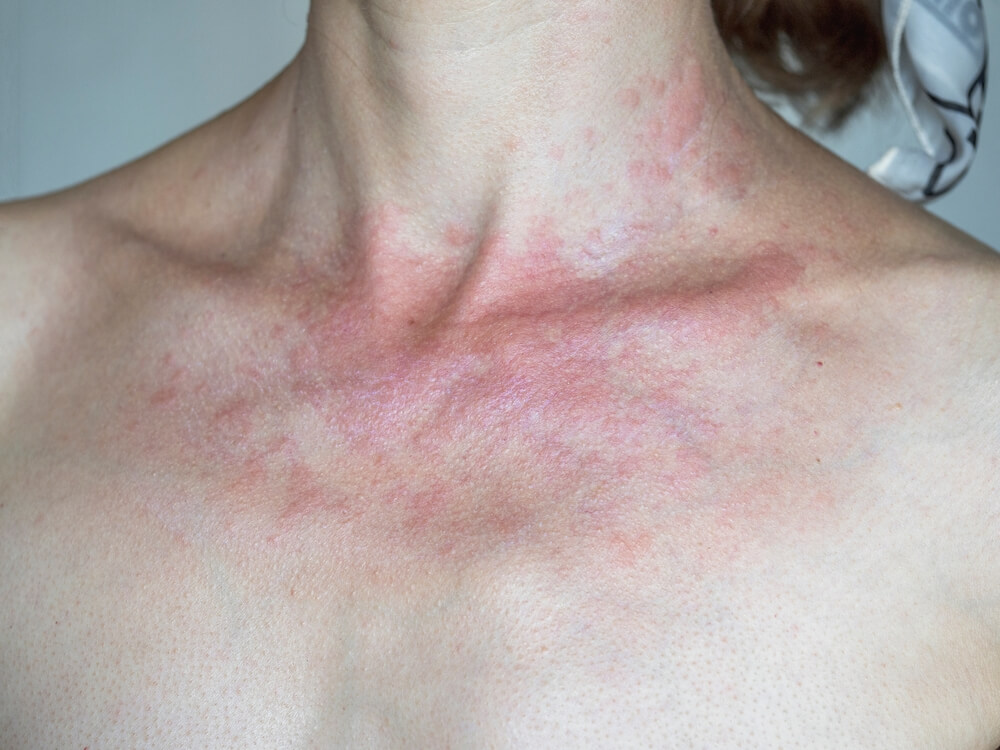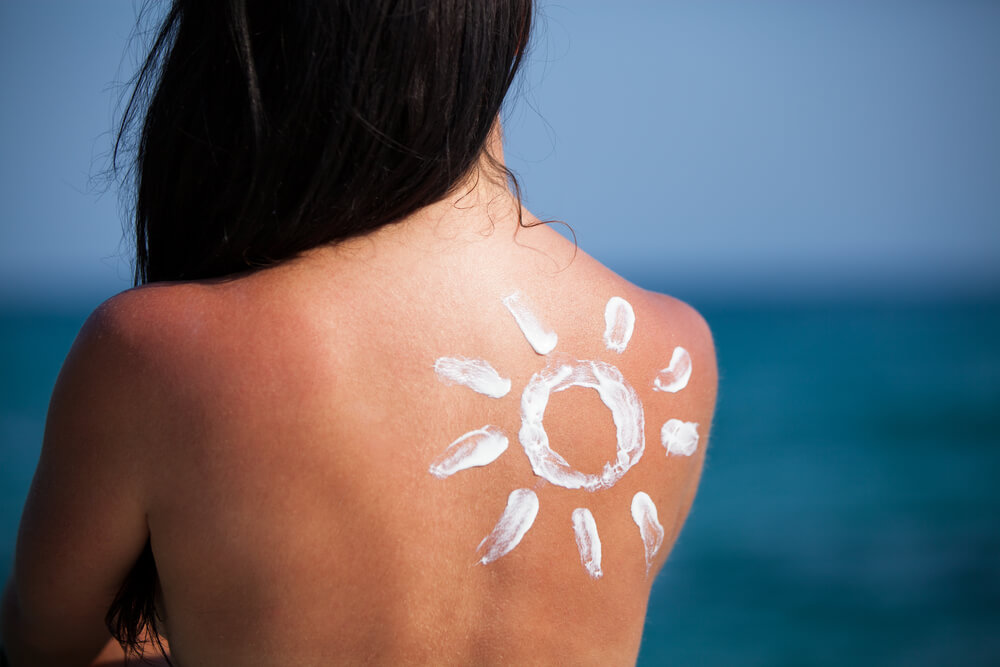Sun allergy often manifests as rashes with other accompanying symptoms after sunlight exposure. The allergy may vary from mild to severe, often causing more concerning symptoms and limiting the patient’s everyday activities.
On the other hand, patients who have different skin allergies may also experience that their conditions, like eczema and hives, flare up more frequently.
In this article, the Allergy and Immunology Center experts will discuss everything you need to know about sun allergy symptoms, available sun allergy treatments, and the steps you can take to limit allergic reactions to the sun.
Different Types of Sun Allergy Rashes
A person’s allergy to the sun may produce different rash types. Most often, the following can be observed:
- Photoallergic reaction: This type of allergic reaction usually occurs when you’ve previously applied a chemical product to your skin, and it reacts with sunlight. The symptoms may appear within a few hours after being exposed to the sun, but in other cases, it can take days. The chemicals that may trigger the reaction can include makeup, different fragrances, medications, and even sunscreen.
- Actinic prurigo: This sun allergy produces raised nodules on the skin, and the rash can affect even those areas that haven’t been exposed. This condition is more prevalent in American Indians and Latin Americans with darker skin tones. Also, experts speculate that this sun allergy has a genetic link to it, calling it Hutchinson’s summer prurigo.
- Solar urticaria: This allergic reaction to the sun will most often cause hives almost immediately (after just a few minutes) of being under the sun. The sun allergy symptoms it produces are usually mild but may also be quite severe.
- PMLE, or polymorphous light eruption: is a type of sun allergy that’s more prevalent in women, especially in young adults or teenagers with a lighter skin tone. Most often, the allergy will appear in the form of small blisters, patches, or bumps only a few hours following sun exposure.

Who Are Most Likely to Develop an Allergy to The Sun?
Unfortunately, these conditions may affect anyone, regardless of race, age, and gender. Still, there are sun allergies that are more frequent among people with either darker or lighter skin, and some people may also be more likely to get an allergic reaction if they have a family history of it.
Furthermore, certain compounds may also increase the risk of having an allergic reaction to the sun. These include:
- Diuretics
- Antibiotics
- Retinoids
- Antifungals
- Hormonal compounds like birth control pills
- Antihistamines
- Drugs that lower cholesterol
- Nonsteroidal anti-inflammatories.
Also, allergies to the sun are more prevalent in late spring and early summer. Over time, as sun exposure continues, the skin may become resistant to exposure, lessening the chances of allergic reactions.
Sun Allergy Symptoms and Causes
Experts in the medical field don’t completely understand the causes of sun allergies. Some studies have established specific genetic patterns to these reactions. In contrast, others concluded that the human body would launch histamines or trigger an immune response following exposure to the sun.
In reality, there can be a number of causes that will mostly depend on the skin reaction type.
Sun allergy symptoms can appear within a few minutes, hours, or even days following exposure. They are often mild but can also be severe, depending on the amount of skin exposure, light intensity, the amount of time the patient has been exposed to the sun, and the type of allergic reaction they’ve experienced.
The sun allergy rash will most likely occur in the exposed areas, but there are cases when they appear on other areas of the skin.
Sun allergy symptoms may involve the following signs:
- Papules, blisters, hives, bumps, or nodules
- Oozing
- Itchiness
- Scaling
- Crusting
- Redness
- Swelling
- Burning or stinging sensations
In rare cases, sun allergy symptoms may also be systemic, causing:
- Fainting and light-headedness
- Headaches
- Vomiting and nausea
- Shortness of breath
- Wheezing
- Anaphylaxis that can be life-threatening.
Diagnosing Sun Allergy
If you suspect that you have an allergy to the sun, you should consult with your primary care physician or dermatologist. Together, you will discuss your symptoms, review your skincare products, and the medications you take.
In other cases, the doctors may use lite testing. This involves placing both artificial and natural light sources from the skin and using different intensities and wavelengths to help experts understand what might be causing the reaction. This test is often combined with patch testing, where patches of susceptible chemicals are also placed on the skin.
Also, in rare cases, experts may order a skin biopsy to get a closer look at the skin cells.
Sun Allergy Treatment and Management
Simply put, avoiding exposure to the sun is probably the most effective treatment in the case of sun allergy rashes. Still, this is not feasible for most people. For them, especially if their reactions are more intense, the following sun allergy treatments may help:
- Using corticosteroids, like prednisone
- Creams to combat itchiness
- Fexofenadine, cetirizine, loratadine, and other antihistamines
- Phototherapy to improve the skin’s tolerance to light
- Omalizumab injections
The prognosis for these allergies can vary widely. Some people simply outgrow the condition, while others will keep experiencing symptoms for up to 15 years or longer.
Reducing the Chances of an Allergic Reaction
For the most part, those who experience sun allergies should know that they can reduce the risk of having an allergic reaction. The following methods may help:
- Being aware and prepared: Learning about your allergy is essential. For example, hives are known to be triggered by sweat and heat. Avoid becoming overheated, and aim to be protected from the sun. Also, prepare for the hot summer months. Eczema can worsen during the summer, so a treatment plan can minimize the symptoms.
- Know about other factors: Sun allergy isn’t the only thing that can trigger reactions during summer. Certain plants and insect bites can also cause severe reactions. Staying away from certain plants and using insect repellent can both help. Also, the high pollen and mold counts, coupled with poorer air quality and smog, can worsen asthma and nasal allergies, leading to skin flare-ups. During these times, limit outdoor activities if you are susceptible to these nasal allergies.
- Build a tolerance: Try to gradually increase your sun exposure in late spring/early summer. This can help your skin to adapt.
- Limit exposure: Avoid the sun from 10 AM to 4 PM.
- Avoidance: Steer away from using chemicals and medicine that might intensify photosensitivity

Sun Allergy Aftercare
After an allergic reaction, you can ease your symptoms by:
- Getting out of the sun
- Placing damp and cool clothes in the affected areas
- Drinking plenty of fluids
- Taking antihistamine
On the other hand, seek immediate medical help when the symptoms are systemic. These can include:
- Fainting
- Chest pain
- Muscle cramps
- Stomach pain
- Severe headaches
- Sudden weakness
- Shortness of breath
- Vomiting
Opt for Professional Help
Sun allergies can be limiting, and patients who experience reactions have every right to be concerned. Fortunately, with the help of trained and knowledgeable experts, people with sun allergies can create a personalized treatment or management plan to help them cope. To find out more, feel free to reach out to us.


